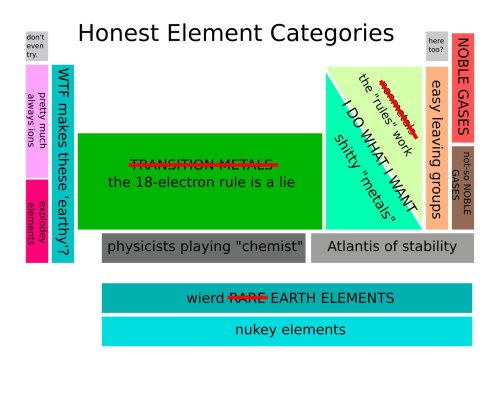stubborn-turtle-blog
Gaming, Science, History, Feminism, and all other manners of geekery. Also a lot of dance
243 posts
Latest Posts by stubborn-turtle-blog
We can build things by growing plants in specific configurations now. We are slowly becoming elves.
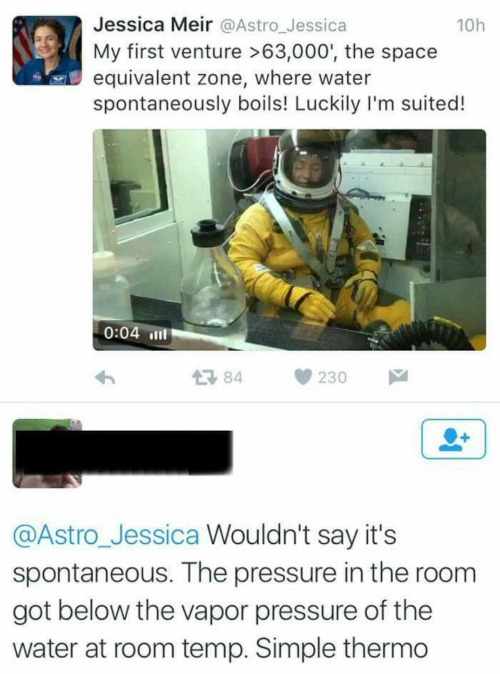
Some guy just mansplained space to an actual fucking astronaut.








NASA recorded the DNA of one twin (Mark Kelly) astronaut on earth, and his identicaltwin before, during, and after Scott Kelly spent a year in space. It looks like there are differences, but we don't know what that entails yet!
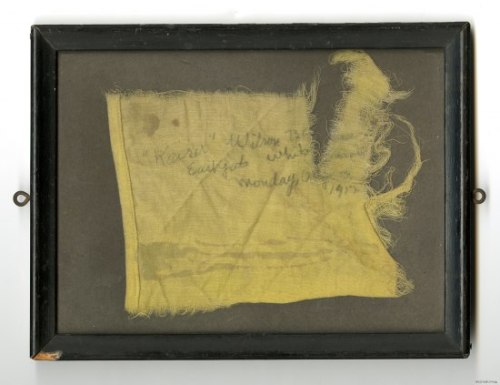
This small scrap of cloth tells a much larger story of suffrage history.
This week in 1917, the National Women’s Party started picketing outside the White House for the right to vote. For months they protested silently, until a crowd began taunting them, throwing eggs and tomatoes at them, and tearing up their banners.
So the women made more banners.
A scrap from one was seized by police but eventually made its way to Alice Paul, the founder of the NWP and leader of the pickets, and then into our National Museum of American History.
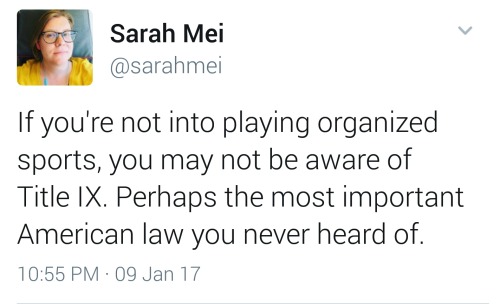
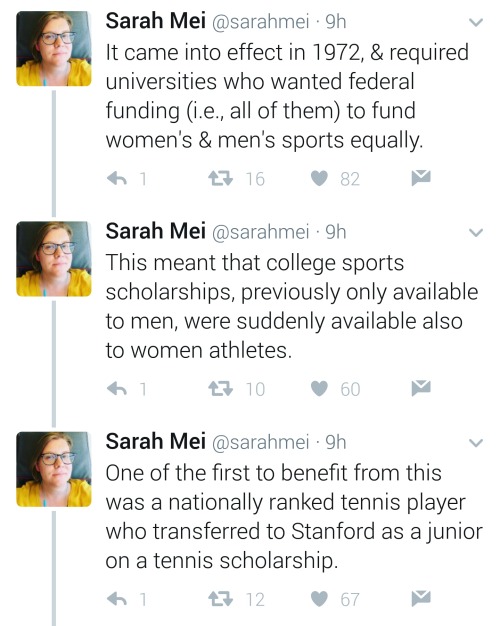
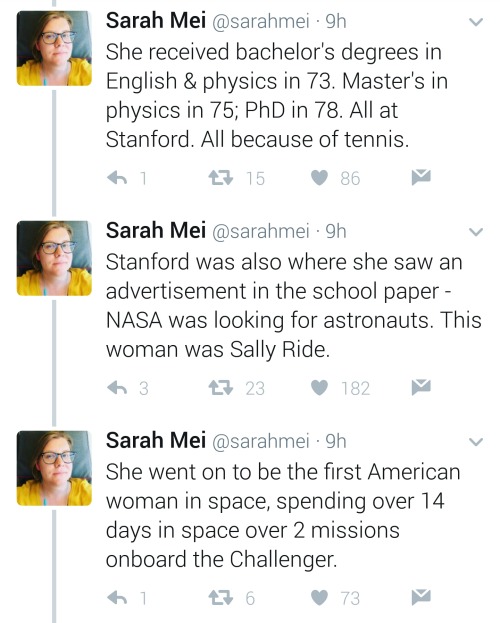
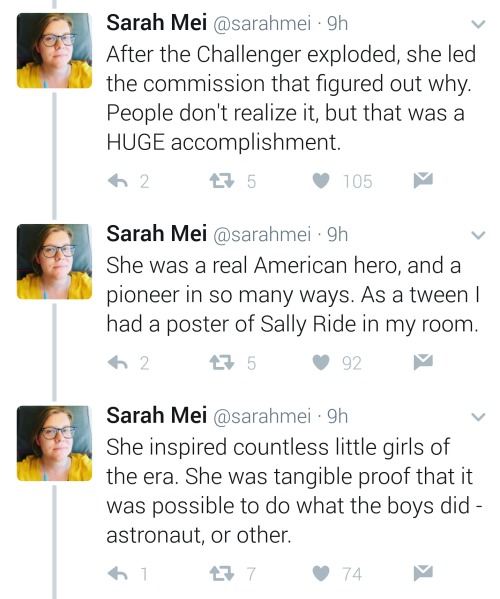
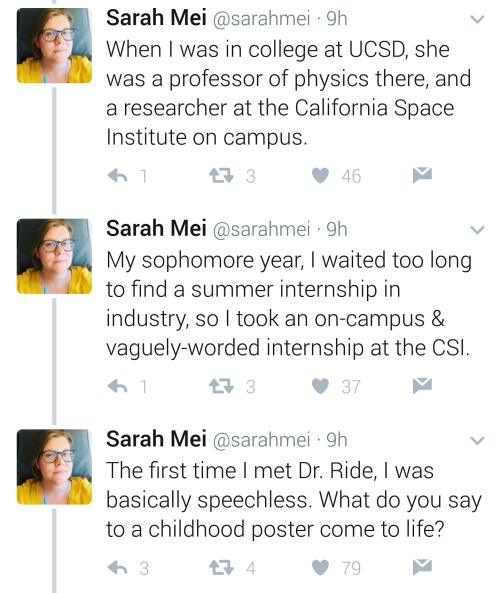
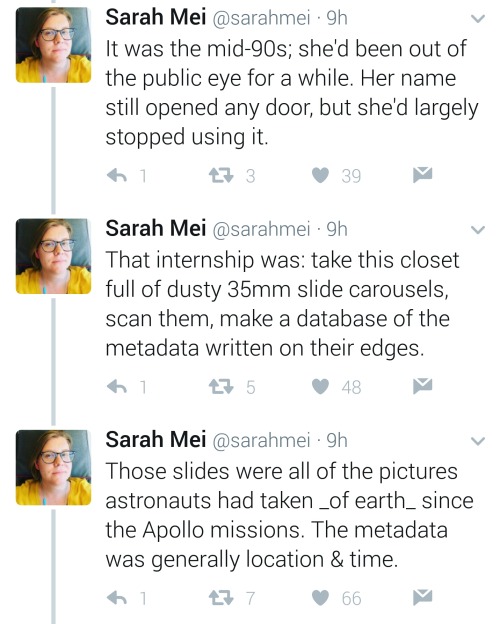
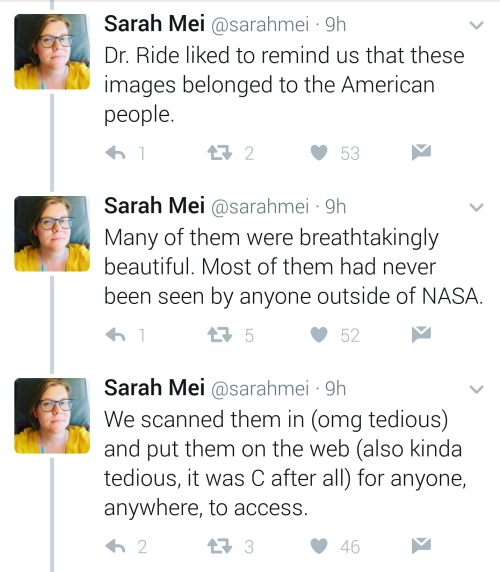
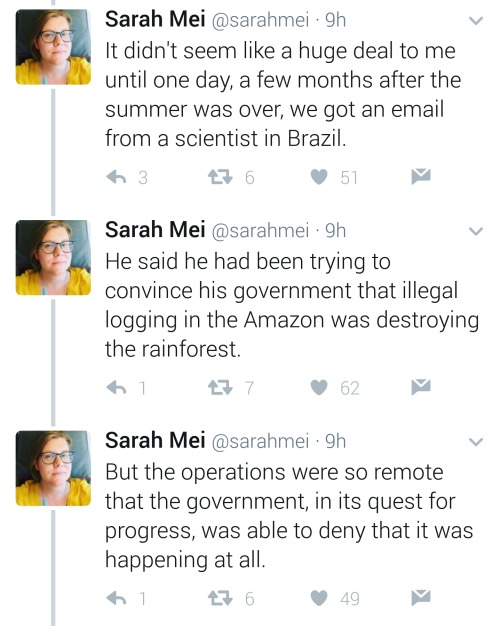
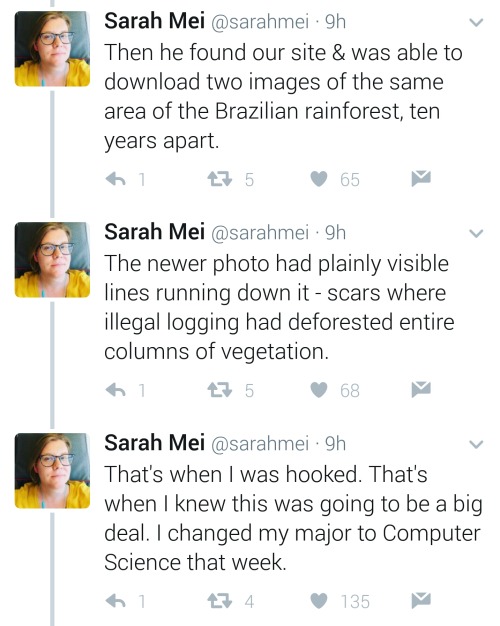
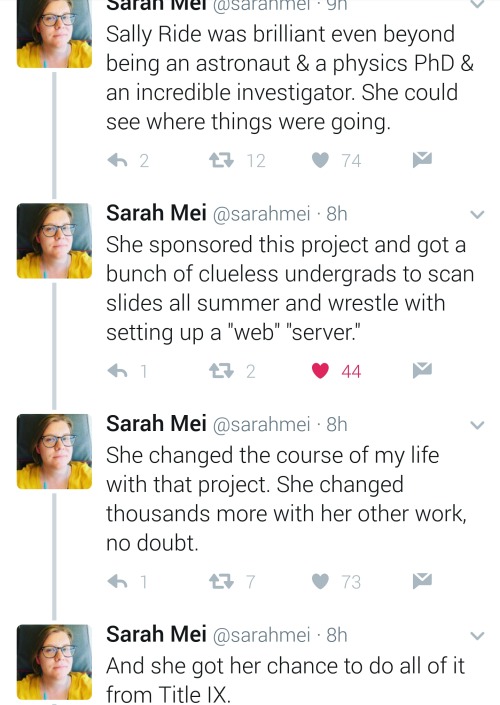
Equal opportunity benefits can be far-reaching
https://twitter.com/sarahmei/status/818682610712866817

The stereoscope was the VR headset of the 19th century.
British scientist Charles Wheatstone developed the first stereoscope in 1838, using side-by-side images and prismatic lenses. By showing the subject from two slightly different angles, the viewer’s brain is tricked into perceiving depth and being immersed in the scene.
This stereoscope was manufactured around 1900 by Brevetés Paris and is in our @cooperhewitt, which has a variety of stereoscope slides in its collection, including depictions of historical moments and camels at the zoo in London.
I learned something… disturbing… today:
In 1860-something this guy named Charles Lutwidge Dodgson wrote a book about determinants. According to my professor, for years it was the book on determinants. Now here’s my problem: Dodgson was his real name. But the name you probably know him by? Lewis Carroll.
The dude that wrote Alice in Wonderland also wrote a book about determinants.
Maybe that’s why they’re so freaking weird.
I second wanting prints of these









Alejandro Guijarro photographs the chalkboards of some of the brightest minds in quantum physics for his continuing series Momentum. He went to research facilities like CERN and many of the top universities in the world to find them.

James Shields (1878 - 1920) is the only person to serve in the US Senate for 3 different states – Illinois, Minnesota, and Missouri.

Colliding Galaxies in Stephans Quintet : Will either of these galaxies survive? In what might be dubbed as a semi-final round in a galactic elimination tournament, the two spirals of NGC 7318 are colliding. The featured picture was created from images taken by the Hubble Space Telescope. When galaxies crash into each other, many things may happen including gravitational distortion, gas condensing to produce new episodes of star formation, and ultimately the two galaxies combining into one. Since these two galaxies are part of Stephans Quintet, a final round of battling galaxies will likely occur over the next few billion years with the eventual result of many scattered stars and one large galaxy. Quite possibly, the remaining galaxy will not be easily identified with any of its initial galactic components. Stephans Quintet was the first identified galaxy group, lies about 300 million light years away, and is visible through a moderately-sized telescope toward the constellation of the Winged Horse . via NASA
js
Two New Missions to Explore the Early Solar System
We’ve got big science news…!

We’ve just added two more science missions to our lineup! The two selected missions have the potential to open new windows on one of the earliest eras in the history of our solar system – a time less than 10 millions years after the birth of our sun.

The missions, known as Lucy and Psyche, were chosen from five finalists and will proceed to mission formulation.
Let’s take a dive into each mission…
Lucy
Lucy, a robotic spacecraft, will visit a target-rich environment of Jupiter’s mysterious Trojan asteroids. Scheduled to launch in October 2021, the spacecraft is slated to arrive at its first destination, a main asteroid belt, in 2025.

Then, from 2027 to 2033, Lucy will explore six Jupiter Trojan asteroids. These asteroids are trapped by Jupiter’s gravity in two swarms that share the planet’s orbit, one leading and one trailing Jupiter in its 12-year circuit around the sun. The Trojans are thought to be relics of a much earlier era in the history of the solar system, and may have formed far beyond Jupiter’s current orbit.
Studying these Trojan asteroids will give us valuable clues to deciphering the history of the early solar system.
Psyche
The Psyche mission will explore one of the most intriguing targets in the main asteroid belt – a giant metal asteroid, known as 16 Psyche, about three times farther away from the sun than is the Earth. The asteroid measures about 130 miles in diameter and, unlike most other asteroids that are rocky or icy bodies, it is thought to be comprised of mostly metallic iron and nickel, similar to Earth’s core.

Scientists wonder whether psyche could be an exposed core of an early planet that could have been as large as Mars, but which lost its rocky outer layers due to a number of violent collisions billions of years ago.

The mission will help scientists understand how planets and other bodies separated into their layers early in their histories. The Psyche robotic mission is targeted to launch in October of 2023, arriving at the asteroid in 2030, following an Earth gravity assist spacecraft maneuver in 2024 and a Mars flyby in 2025.
Get even more information about these two new science missions HERE.
Make sure to follow us on Tumblr for your regular dose of space: http://nasa.tumblr.com
I had an interview today and I totally rocked this question:
Interviewer: How would you explain DNA to an 8 year old?
Me: I would tell them that DNA is like Legos. Like four different colored legos. Individually, they can't do much, but when you build them in a certain order, you can make different things, like a house or a tree or little lego people. It's the same in your body. Four different DNA molecules fit together to create the unique you.
Interviewer: *brief pause* That's a really good answer.
Me: Thank you. I like Legos and science.

Wow.
The move to effectively kill the Office of Congressional Ethics was not made public until late Monday, when Representative Robert W. Goodlatte, Republican of Virginia and chairman of the House Judiciary Committee, announced that the House Republican Conference had approved the change. There was no advance notice or debate on the measure.
The surprising vote came on the eve of the start of a new session of Congress, where emboldened Republicans are ready to push an ambitious agenda on everything from health care to infrastructure, issues that will be the subject of intense lobbying from corporate interests. The House Republicans’ move would take away both power and independence from an investigative body, and give lawmakers more control over internal inquiries.
It also came on the eve of a historic shift in power in Washington, where Republicans control both houses of Congress and where a wealthy businessman with myriad potential conflicts of interest is preparing to move into the White House.
[…]
“This is huge,” said Mr. Morgan, who now defends lawmakers targeted in ethics investigations. “It effectively allows the committee to shut down any independent investigation into member misconduct.“

Really? You’re really going to say this?
First off: see this?

This is my masters’ degree in anthropology. I’d show you my BA, but it’s at my parents’ house. I’m three and a half years into a PhD in physical anthropology. I’ve been employed to do physical anthropology at one of the world’s best natural history museums. My area of study? Teeth and diets. I’m not here to argue veganism or vegetarianism, I’m here to tell you, point by point, why you’re devastatingly misinformed about our place in the primate family tree, along with my peer-reviewed sources behind the jump. I know we live in a “post-truth” society so maybe being presented with the overwhelming consensus of the scientists who currently work with this material is meaningless to you, and honestly, this probably isn’t going to make a bit of difference for you, but I can’t let this slide. Not in this house built on blood and honor. And teeth.
1. The evidence for being closely related to chimpanzees is vast and well-understood thanks to advances in DNA analysis. We share a huge amount of DNA with them, and not just repeating patterns in non-coding DNA. We have numerous genes that are identical and likely diverged around 7 million years ago, when Sahelanthropus tschadensis was roaming the earth. S. tschadensis was a woodland species with basal ape and basal human-line traits. The most notable was the positioning of the foramen magnum towards the central base of the skull and not emerging from the back suggests bipedality. This, along with other traits such as small canines worn at the tip, which implies a reduced or absent C/P3 honing complex (the diastema), suggests that this is actually a basal trait and the pronounced diastema we see in other species was a trait that came later. But more on that later- back to chimps and what we mean by sharing DNA. Our chromosomes and chimp chromosomes are structured far more like each other than other mammals. Furthermore, the genes located on these chromosomes are very similar. Chromosome 2, for instance, is nearly identical to two chimpanzee chromosomes. (Chromosome 2 in humans, Neanderthals, and Denisovans is different from Chromosome 2 found in apes and is actually the remnant of an ancient mutation where Chromosome 2 and 3 merged- you can see that from its vestigial centromeres and the genes found on it. We can’t get DNA from fossil material, but Neanderthal and Denisovan subfossils have demonstrated that this reduced chromosome count- we have one fewer pair than apes- is a typical trait of the Homo genus). Here’s a side by side comparison of Human and chimpanzee chromosomes.

Gene coding regions are colored- bands at the same place mean that there’s two identical genes at that locus. Our similarities to lemurs, on the other hand, aren’t on homologous chromosomes. We have similar coding around the centromeres but the genes express themselves differently. The structure of non-ape primate genes is also significantly different; when the first chromosomal comparisons were done between humans and lemurs back in the 1990s, it was discovered that lemurs have much more highly-concentrated heterochromatin at their centromeres, whereas the structure of human and chimpanzee centromeres is similar. The major differences in chimp and human DNA are in the noncoding regions; most of our genes have identical structures.
2. All primates evolved from a lemur-like organism, not just humans. Here’s one of them. I’ve seen her in person. Pretty cool, huh?

Her name is Ida and she’s a member of the genus Darwinius. But that’s just like saying all primates evolved from something that was basically a tree shrew- which is also true. See, one of the main points of evolution is that organisms are continually changing throughout time. We didn’t jump from lemur-like organism to human; changes were slow and gradual and the lineage isn’t really a straight tree. The fossil species we have and know lead to different lines branching out. Some things died off, some things flourished. Heck, look at the Miocene- twelve million years ago, there were hundreds of ape species. Now there’s twenty-three. (Sixteen gibbons, two chimp species, two gorilla species, two orangutan species, and one human species. There’s also some subspecies of gorilla and gibbon, but I’m only counting the primary species.) It’s hard to trace things back, but saying that we evolved from lemur-like species is obtuse and obfuscates the real point, which is that Homo and Pan descended from a relatively recent-in-the-grand-scheme-of-things common ancestor.
3. Our dentition is unique to the extant primates, but not australopithecines. Our teeth look very much like other members of the genus Homo, the extinct ones, as well as many of the australopithecines. We also have very similar enamel proportions to gracile australopithecines; apes have much thinner enamel overall.
But what did australopithecines eat?
Everything. We know they were eating fruits and nuts based on microwear analysis and strontium analysis, but we also know they were eating meat- and in pretty decent quantity, too. We’ve found all kinds of butchering sites dating back millions of years and in association with Australopithecus garhi, the earliest tool user, but we can also see this in tapeworm evolution. There’s many, many species of tapeworm in several genera. But three of them, in the genus Taenia, are only found in humans. And these species diverged from… carnivore tapeworms. Their closest relatives infect African carnivores like hyenas and wild dogs.

Tapeworms that are adapted to the specific gut of their host species need a certain environment, as well as a specific cycle of infection so that it can reproduce. A tapeworm that infects hyenas is going to be less successful if it somehow makes the jump to a horse. But if the hyena tapeworm was able to adapt to our gut, that suggests that our stomach was hospitable enough for them chemically to survive- which brings me to the intestines.
4. Our intestines are also unique. Yes, we have longer intestines than carnivores, but we also don’t have cecums like herbivores. We are omnivores and that means we still needed to retain the ability to digest plants.
The key to being omnivores is omni. All. I’m not saying we should only be eating meat, I’m saying our ancestors ate a varied diet that included all kinds of things. If we weren’t omnivores, why would we have lost the cecum’s function? Why is the human appendix only a reservoir for the lymphatic system, as it is in carnivores? The cecum is an extremely important organ in herbivores, as it houses the bacteria needed to break down cellulose and fully utilize fiber from leaves. But we don’t have that. Instead, we compensate with a long gut. Our ancestors absolutely did eat fruits and nuts and berries, but they also ate other stuff. Like scavenged carcasses and bugs and probably anything they could fit in their mouths. Which- actually, primate mouths are interesting. Humans and chimpanzees have enclosed oral cavities, thick tongues, and jaw angles much more like herbivores than carnivores- suggesting a herbivorous ancestor. That’s not something I’m arguing against at all. But again, we have adaptations for eating meat and processing animal protein because we are an extremely opportunistic species.
5. Our canines are true canines. First, semantics: having a diastema does not canine teeth make. We refer to the canine teeth by position- even herbivores, like horses, have them. They’re the teeth that come right after the incisors. All heterodonts have the potential same basic tooth types- incisors, canines, premolars, molars- in various combinations and arrangements. Some species don’t have one type of teeth, others don’t have any- but it’s silly to say that the canine teeth aren’t canine teeth just because they don’t serve the same function as a gorilla’s or a bear’s or some other animal’s. It’s basic derived versus primitive characteristics.
Now that we’ve got semantics out of the way, let’s talk about that diastema. The lost diastema is a derived trait, which means that our ancestors had it and we lost it over time. All other extant non-Homo primates have a canine diastema. All of them. However, when you look at australopithecines, we see that many of them either don’t have it or have it in a reduced capacity. At the earliest known hominin site, Lukeino, we see Orrorin tugenensis with reduced canines compared to ape fossils and modern apes- and… you do know that apes don’t use their canines for eating meat, right? Like, primate canines serve a very different purpose than carnivorans’ canines. It’s suggested that the large canines are for social display moreso than anything dietary- bigger, more threatening teeth are useful if you’re a gorilla or chimpanzee fighting to the top of your group’s social structure.
I’m going to refer you to a blog post written by Dr. John Hawks, a good friend of my advisor and generally a pretty cool guy. He’s got a nice writeup on the evolution of hominin teeth and how the human line’s teeth have changed through time.
Also, of course our teeth are going to be smaller. When we compare archaic Homo sapiens fossils to modern skeletons, their teeth and jaws are much more robust. This is likely related to the introduction of soft foods- and by soft, I mean cooked grain mush- to the diet around the time of domestication, right before the population explosion that happened about 10k years ago. In general, post-domestication human jaws are much smaller and more crowded than any other humans and hominins that came before.
6: Neanderthals did die out, but not in a catastrophic event like we think of with dinosaurs. While there are no living Neanderthals today that we would classify as Homo neanderthalensis, there is plenty of evidence that we interbred and likely outcompeted them as a species due to our overwhelmingly large population size (hypothesized based on number and locations of remains found). While there’s only a small percentage of Neanderthal mitochondrial DNA lines in human populations today, it’s quite likely we lost a lot of that due to genetic drift and population migration- Neanderthals, after all, had a much more limited range than Homo sapiens sapiens. Their eventual extinction is a mosaic of events- outcompetition plus assimilation. The line between Homo sapiens sapiens and Homo neanderthalensis/Homo sapiens neanderthalensis is blurry- there’s some physical anthropologists who actually think we should be including them within our species as a subspecies- but they are extinct in that the specific subset of hominins with distinct karyotypes and potential phenotypes no longer exists.
And if you don’t know, now you know.
Keep reading
Is SQL useful for astrophysics or chemistry in any way?
Well the Q and the L aren’t but as you can see astrophysics and chemistry both use the letter S at least once per word. Hope that helped you










2016 wasn’t all bad as Canadian Astronaut Chris Hadfield explains. Humanity did some good this year.
science news: another incredibly smart and driven woman who discovered really important things just died without receiving recognition in her lifetime for any of her groundbreaking crucial work after decades of brutally unfair sexism click through for even more in depth accounts of the monstrous amount of sexist bullshit she had to put up with every single day of her goddamn life
science news: girls today are hesitant to go into STEM fields for some reason
Woman who loves science over here
Science Side of Tumblr, I need your help! Ladies of the Science Side of Tumblr, I especially need your help!
I had a conversation at my non-science day job that went like this:
A friend who shall be called Diane (not her real name) comes to my desk to chat. Just one of the many topics we discuss is that her boyfriend is taking a class in wildlife biology. She has decided that she has grown tired of hearing about local wildlife and hearing him recite a plethora of scientific names.
I responded positively to this subject, and told her that I too found the subject interesting. A third person had heard our conversation. We shall call her Claire (again, not her real name). Claire immediately responded, “Girls don’t like that kind of thing.”
“Are you saying that girls don’t like science?” I asked.
“No, not normally they don’t,” she responded.
Before you all screech with anguish, bear with me for a moment. We all know that this is not true. As a man, I find this idea upsetting for countless reasons that have all been validly discussed before. To try to debate the issue is rather moot. Instead, I’d like a show of hands.
Ladies of the Science Side of Tumblr! I call you to arms! Will you rally around me in saying that women can and do indeed love science, of any variety? Gentleman of the Science Side of Tumblr who know someone who is a girl who also happens to love science, will you stand with me too? We all like and reblog the pro-women-in-science posts we see so often, let’s all stand and be counted in one place this time.
Reblog this if you are a woman who loves science. Reblog this if you are a man who knows a woman who loves science. Let us disprove her beyond all doubt!

Thousands of scientists in Germany, Peru and Taiwan are preparing for a new year without online access to journals from the Dutch publishing giant Elsevier. Contract negotiations in both Germany and Taiwan broke down in December, while Peru’s government has cut off funding for a licence.
“It’s very unpleasant,” says Horst Hippler, spokesperson for the DEAL consortium of state-funded universities and research organizations, which is overseeing negotiations in Germany. “But we just cannot accept what Elsevier has proposed so far.”
Continue Reading.



Methodology:
Characters were counted by hand based on UESP quest writeups. Characters were only counted if they were questgivers or involved in multiple quests. Only characters from the main quest or faction questlines were counted. Any expansions or DLCs have not been included.
Due to the incomplete documentation for ESO quests, that game probably has more margin of error than others, though it should be balanced out due to how many NPCs were counted overall. I realize that this is an imperfect process, especially considering the very different ways that each game handles quests. I think the overall patterns hold, though, even if the percentages might be off a few points were someone to repeat the process.
You’ll also notice that Morrowind, Oblivion, and ESO have two main quest graphs. The latter is for including characters who are also encountered in the other parts of the game. For Morrowind this is questlines where you must speak to all the house leaders to become Hortator, in Oblivion it is the Aid for Bruma questline where you must speak to the counts/countesses to gain their support, and in ESO this is the Weight of Three Crowns quest where the faction leaders convene on Stirk. Daggerfall, meanwhile, randomizes most of its quest, and the overall graph counts the main quest and nobles quests.
Sample sizes are as follows: Daggerfall (23 total, 10 main quest), Morrowind (82 total, 16 main quest, 34 with hortator), Oblivion (36 total, 9 main quest, 15 with Bruma allies), Skyrim (59, 11 main quest), ESO (278 total, 6 main quest, 10 with Stirk).
Conclusions and interpretations under the cut.
Keep reading
Brief comment on Gender Parity in TES games
So, apparently saying that there should be more female and non-binary characters in TES franchise is a big offense to some players. Some people don’t think there’s anything wrong by having male characters as a clear majority in all games, some people “just want to enjoy their fantasy game” and don’t have patience to face even a little bit of seriousness in their lives without having to express how “graphs” “spoil the fun”.
Well, we just wanted to say this: if you don’t think there should be more space for women and non-binary characters in TES games (and in all games and stories in general) than there is now, we won’t miss you if you unfollow us.
Happy holidays to you all,
@theelderscrollslore
Does anyone else just examine the marvel that is the human body (not in a sexual way). Like, I’m sitting here right now moving my fingers and watching my ligaments tense and loosen as they pull on the bones that compose the phalanges of my hand. Certain finger positions cause divots to form between the ligaments, while balling a fist causes them to be almost even with the flesh of my hand.
Sorry for the weird ramble. I just find how all the parts of the human body work and fit together to be absolutely fascinating.
The human body is an amazing machine.
![It’s Amazing How Crafty Humans Are! [Via @veritablehokum]](https://64.media.tumblr.com/43311b965db92302465d25fa886954b7/tumblr_oj9ihcVr6D1s04h2ho1_1280.jpg)


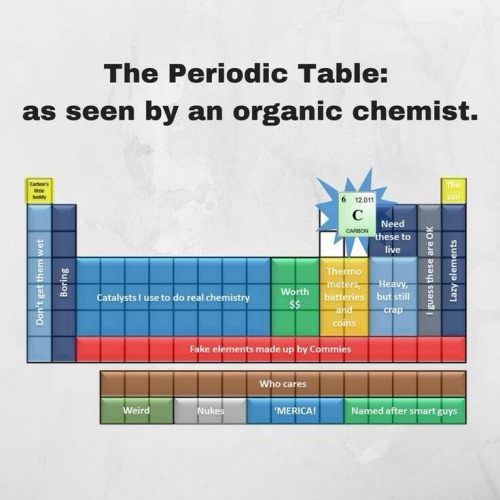

![The Best Squad. [ Via @awkwardyeti]](https://64.media.tumblr.com/55a16af155b4e0e0c33b49ad13241bd6/tumblr_oiul6tTnnT1s04h2ho1_500.png)
